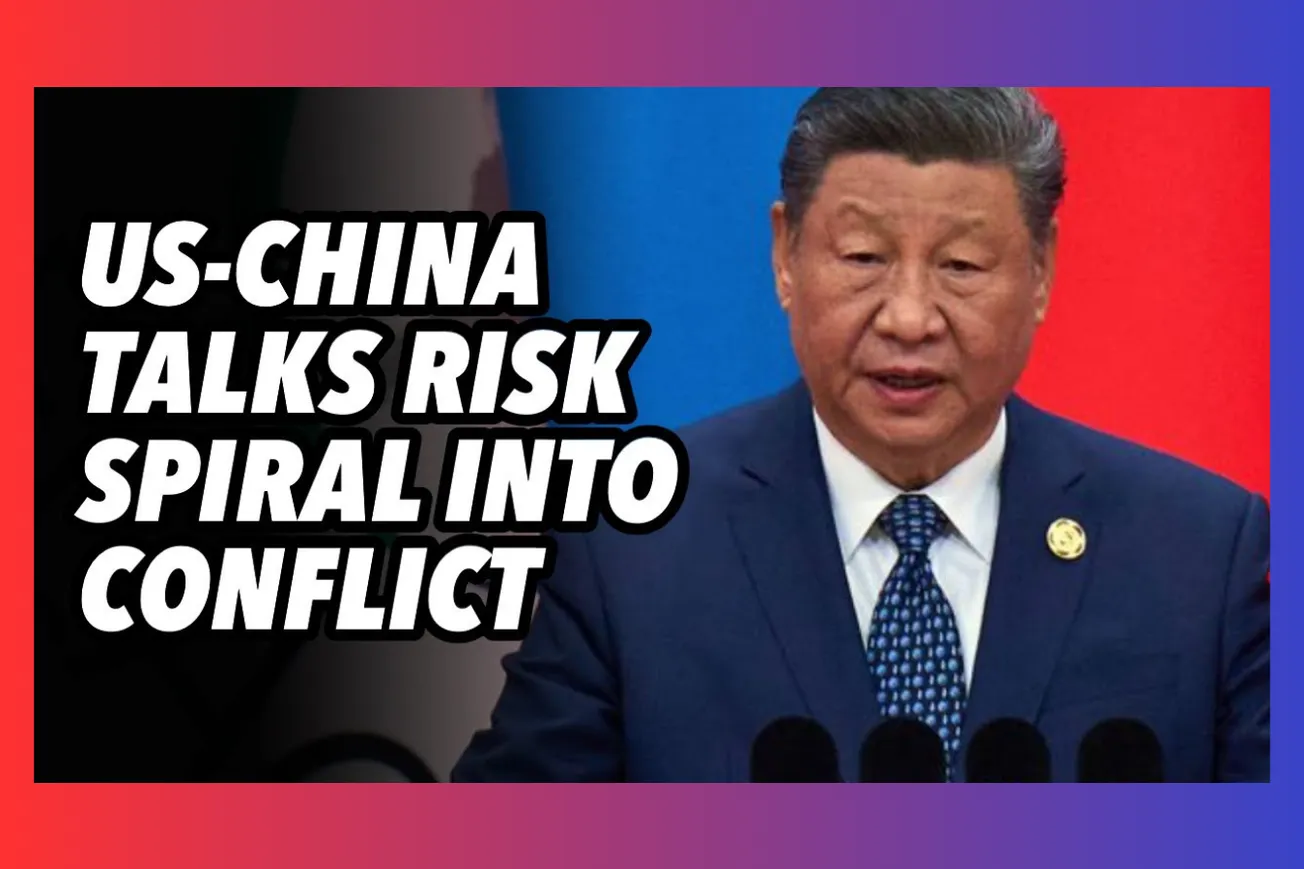Table of Contents
Recent US-China trade negotiations reveal deepening tensions that risk escalating beyond economic disputes into dangerous military confrontation.
Key Takeaways
- US-China trade talks have stalled despite initial tariff reductions from 145% to 30-50% levels
- Trump administration receives conflicting advice on whether to pursue comprehensive deals or maintain current tariff strategy
- Anti-China sentiment in both Washington elite and broader US population drives desire to "punish" rather than negotiate
- China's "century of humiliation" historical experience shapes its determination never to be pushed around again
- Chinese leadership has shifted toward accepting economic divorce after Biden administration policies hardened their stance
- Military escalation risks emerge if trade disputes continue without resolution, particularly in South China Sea
- Both nations possess economic resilience to weather divorce but mutual humiliation attempts could trigger dangerous spiral
- China estimates 9 million job losses from US decoupling but considers this manageable for 1.4 billion population
- Current 30% US tariffs already represent historically high levels that could achieve desired economic separation
Trump's Tariff Strategy Faces Internal Opposition
The Trump administration appears divided on fundamental questions about China policy. While some advisors push for comprehensive negotiations that could take two to three years, others advocate for maintaining the current 30% tariff rate and focusing on domestic reindustrialization. Trump himself seems caught between these competing visions, expecting quick Chinese concessions that haven't materialized.
Current tariff levels already represent significant economic pressure. The reduction from 145% to 30-50% range occurred through informal understandings rather than formal negotiations, suggesting both sides recognize the need for some de-escalation. However, reports indicate China has violated certain agreements reached by Scott Bessent in Geneva, though the specific nature of these violations remains unclear.
The absence of visible, formal negotiating teams raises questions about whether serious diplomatic efforts are actually underway. Without clear communication channels and structured talks, misunderstandings and escalation become more likely.
Economic Divorce: Practical Reality or Dangerous Fantasy
Both nations have begun preparing for what experts term an "economic divorce" - a managed separation of their previously intertwined economies. China's leadership now believes the economic relationship developed under Clinton and Obama cannot be sustained, particularly after experiencing Biden administration policies.
Chinese economic planning reveals confidence in weathering this transition. Domestic savings provide sufficient capital to absorb trade losses with the United States, while internal consumption can drive growth for approximately 30 years. The recalibration toward domestic markets has been underway for five years, suggesting Beijing views divorce as manageable rather than catastrophic.
American reindustrialization efforts face different challenges. Trump's focus on bringing manufacturing back requires sustained investment and policy consistency over multiple years. The current tariff structure could support this goal if maintained consistently rather than constantly renegotiated.
Historical Grievances Shape Chinese Response
China's approach to current tensions cannot be understood without recognizing the "century of humiliation" that preceded Communist Party rule in 1949. This period of economic, social, and political collapse, largely engineered by Western powers, created lasting determination never to accept foreign domination again.
This historical consciousness appears constantly in Chinese social media and public discourse. While Chinese leadership and business communities remain pragmatic, underlying resentment surfaces when China feels threatened with humiliation. The transition from seeking accommodation with Trump in 2017 to accepting divorce reflects this hardening attitude.
Chinese officials initially worked extensively to maintain economic ties when Trump first took office. A banker in Shanghai noted in 2017 that business people and party officials frequented the American consulate while intellectuals and military personnel visited the Russian one, indicating economic priorities. This dynamic has since shifted dramatically.
Military Escalation Risks From Trade Disputes
The most dangerous aspect of current tensions involves potential military escalation. Anti-China hawks in Washington may pressure Trump to move beyond tariffs toward military pressure if economic measures fail to produce desired results. Potential flashpoints include interference with Chinese trade through the Strait of Malacca or increased confrontation in the South China Sea.
Defense Secretary Hegseth's hawkish speech in Singapore demonstrates how some administration figures view China as requiring military containment rather than economic competition. This mindset transforms trade disputes into security threats, making compromise more difficult.
Chinese leadership strongly opposes military confrontation but would respond decisively if pushed toward humiliation. Historical experience suggests that external pressure unifies Chinese society and hardens resistance. A spiral of mutual humiliation attempts could quickly escalate beyond economic measures.
Current tensions remain manageable through diplomatic channels, but the window for preventing escalation may be narrowing. Both sides possess the economic resilience to weather divorce, but neither can afford the consequences of military conflict.
Population Sentiment Complicates Diplomatic Solutions
Anti-Chinese sentiment in parts of the US population extends beyond Washington policy circles, creating political pressure for confrontational approaches. This sentiment portrays China as stealing American technology, contributing to deindustrialization, and unfairly challenging US economic dominance.
Such attitudes make compromise politically difficult for any American administration. Politicians who appear "soft" on China risk domestic criticism, encouraging harder lines that may not serve long-term strategic interests. The desire to "teach China a lesson" reflects emotional rather than strategic thinking.
Chinese public opinion has similarly hardened against the United States. Social media discussions frequently reference historical humiliation and express determination to resist foreign pressure. While Chinese leadership maintains pragmatic approaches, they cannot ignore public sentiment entirely.
Both populations seem prepared for economic separation but resistant to perceived capitulation. This creates narrow space for diplomatic solutions that satisfy domestic audiences while preventing dangerous escalation.
The current trajectory toward economic divorce appears both inevitable and manageable, but requires careful handling to prevent the destructive spiral that mutual humiliation attempts would unleash.





